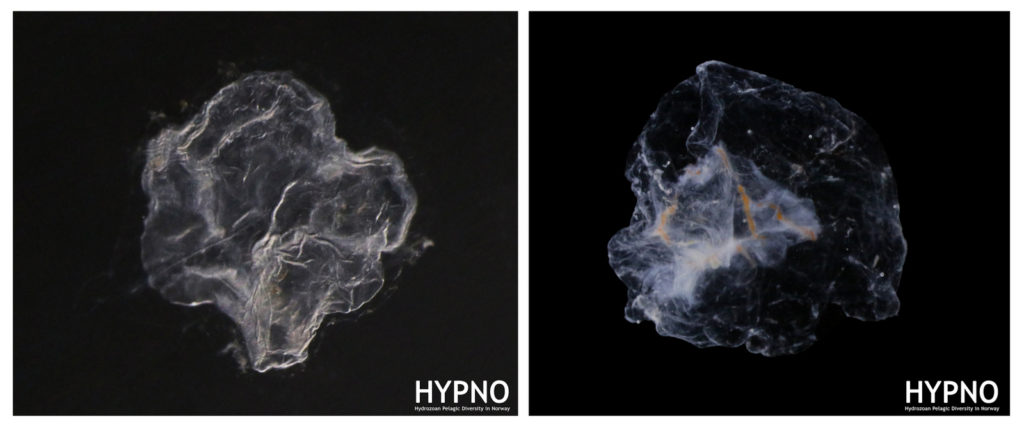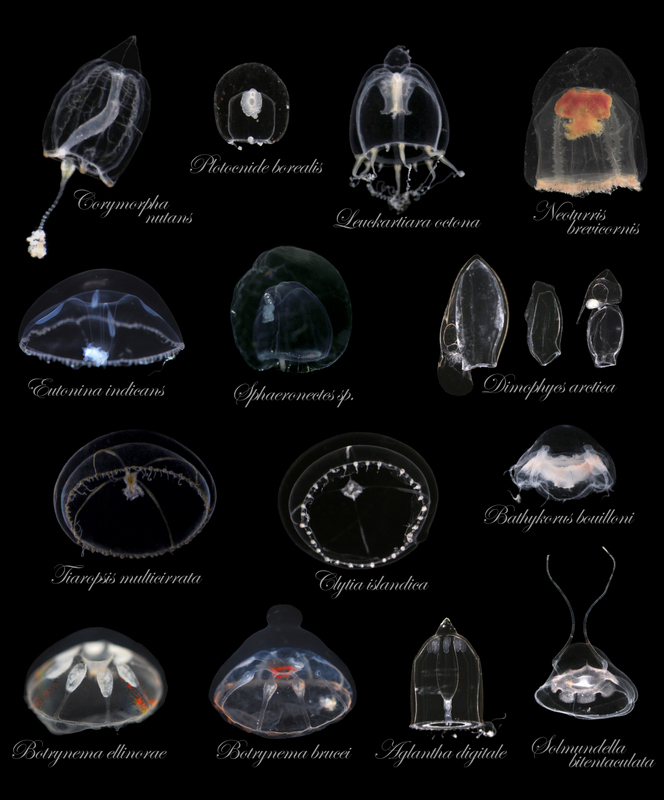Eric, from the Federal University of ABC, visited the University Museum in November. We asked him about his time in Bergen examining some of the least common species of siphonophores in the collections and this is what he told us:
My name is Eric Nishiyama, and I am a PhD student from Brazil. The main focus of my research is the taxonomy and systematics of siphonophores, a peculiar group of hydrozoans (Cnidaria, Medusozoa) notorious for their colonial organization, being composed of several units called zooids. Each zooid has a specific function within the colony (such as locomotion, defense or reproduction) and cannot survive on its own.

Fig_1. I had the opportunity to examine both ethanol- and formalin-fixed material from the museum. For morphological analyses, specimens preserved in formalin are preferable because ethanol-fixed individuals are usually severely deformed due to shrinkage.
Understanding how zooids evolved could provide major insights on the evolution of coloniality, which is why I am looking at the morphology of the different types of zooids. In this sense, siphonophore specimens available at museum collections provide valuable information for visiting researchers such as myself.
During my short stay at the University Museum of Bergen in November, I was able to examine a few siphonophore samples deposited at the museum’s collections. By examining the specimens under a stereomicroscope, and using photography and image processing tools, I was able to gather a lot of information on the morphology of several species.

Fig_2. Documenting the morphology of the nectophores of Rudjakovia plicata (left) and Marrus or-thocanna (right) was particularly interesting because these species are not commonly found in museum collections.

Fig_3. Other ‘unusual’ siphonophores that I was able to examine were Crystallophyes amygdalina (left) and Heteropyramis maculata (right).
The data obtained will allow me to score morphological characters for a phylogenetic analysis of the whole group, and hopefully will help me revise the group’s taxonomy.
– Eric


